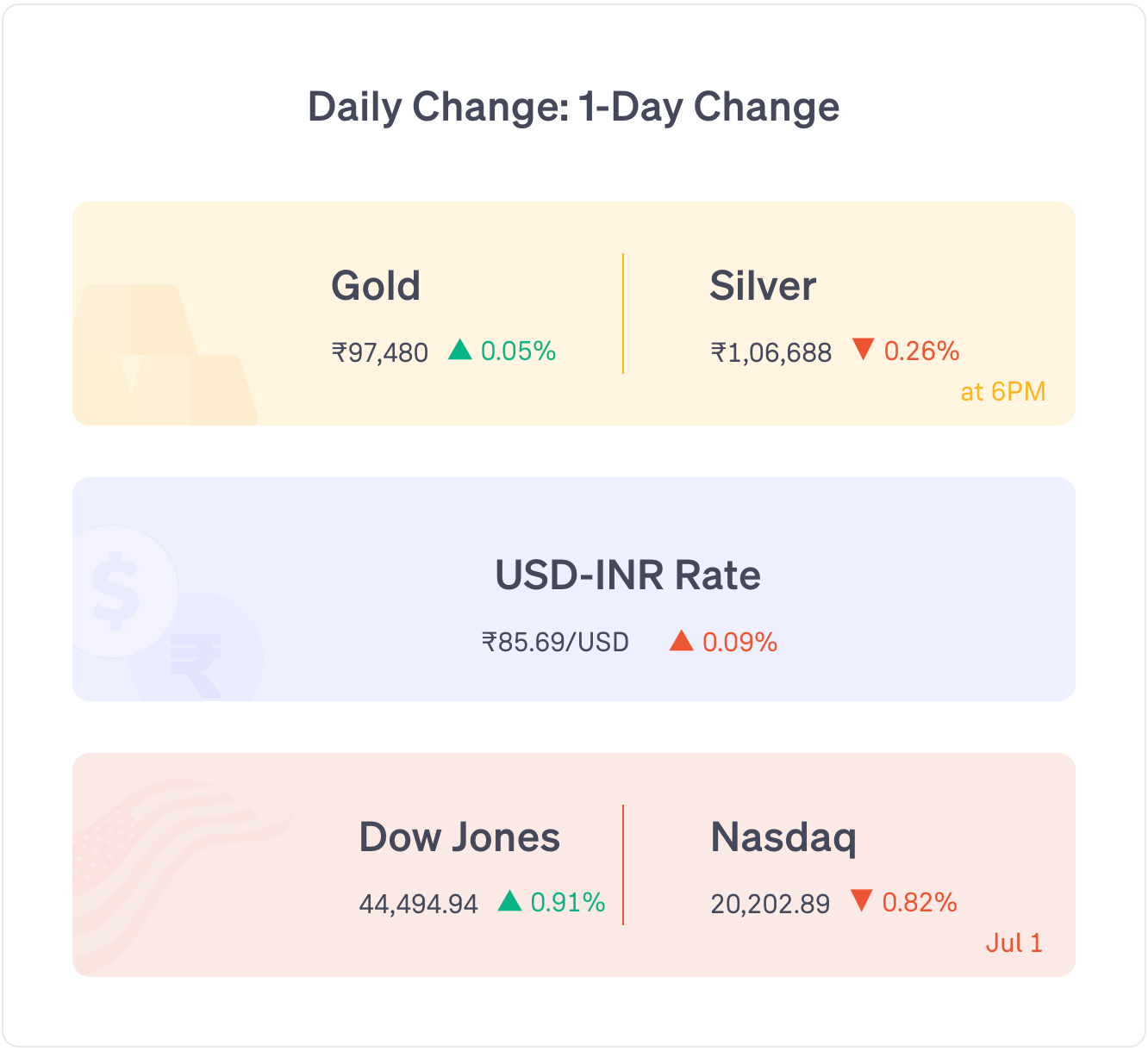Markets opened above yesterday’s closing point.
Nifty 50 fell throughout the day and closed negatively.
Metal stocks and consumer durables stocks rose the most today. Realty stocks and PSU bank stocks fell the most.
Global markets: Most US markets closed in green. European and Asian markets showed a mixed trend.
News
OMCs like BPCL, HPCL, and IOCL will receive full compensation for the losses of over Rs 40,000 crore in FY24 incurred due to subsidized LPG sales: Petroleum and Natural Gas Minister, Hardeep Singh Puri.
SEBI has announced a 6 month special window (7 July 2025 to 6 Jan 2026) to allow investors to resubmit old physical share transfers that were rejected before, so that they can be converted to demat form.
Government is planning to build 3 strategic oil reserves at Bikaner, Mangalore and Bina. These reserves will boost energy security: as per news reports.
HDB Financial Services IPO got listed at a 12.84% premium over its issue price.
Sambhv Steel Tubes IPO got listed at a 34.15% premium over its issue price.
Crizac IPO was subscribed 0.46 times. Retail subscription: 0.60 times. IPO closes on 4 July.
Stocks Updates
Asian Paints: CCI ordered an investigation against the company based on a complaint from Grasim Industries over alleged anti-competitive actions.
Adani Enterprises: company subsidiary, Adani Defence Systems has completed the Rs 400 crore acquisition of an 85.1% stake in Air Works, India’s largest private aircraft MRO company.
InterGlobe (IndiGo): launched its first long-haul flight with a direct Mumbai to Manchester service, operating thrice weekly with the Boeing 787-9 Dreamliner aircraft.
SBI Cards: received a GST show cause notice over a Rs 81.9 crore input tax credit mismatch for FY 2019 to FY 2021.
Word of the Day
XIRR (Extended Internal Rate of Return)
It is a way to calculate annual return on investments, when money is invested or withdrawn multiple times
People can invest different amounts over different periods of time (example: SIP).
XIRR gives the rate of return after accounting for all such investments/withdrawals.
Thus, it is like your personalised rate of return.
It is ideal for long term investments.
The formula for calculating it is a little complicated.
There are many online tools that can be used for calculating XIRR. Most investment platforms calculate and show XIRR for investors.
6 Day Course
Theme: FIRE
Day 3: Wednesday
Many people plan for a mixed FIRE strategy wherein they do not fully retire.
Instead, they quit a high-paying but high-stress job and depend on a low-paying job to manage their daily expenses while their invested amount grows (without them making any further investments).
Example: say a person earns Rs 1 lakh and invests Rs 40,000 every month. This means the living expense is Rs 60,000.
Once they achieve a certain target investment amount, the person may quit and join a low-stress job or freelance while earning Rs 60,000.
The amount they have already saved and invested grows and they need not withdraw any money from it till it reaches a higher value.
Then, at a later stage in life, the person might quit working entirely and depend on the invested amount for all expenses.
Featured Question
Q. “Since long-term capital gains up to ₹1 lakh are tax-exempt, if I sell investments each year just up to that limit, will I be able to save on taxes in the long run?”
Yes, tax can be saved in this manner.
This is called tax harvesting.
Every year, you can sell mutual fund units such that your long-term equity capital gains are just less than Rs 1 lakh.
This way, you will reset the buying price every year to a higher value.
It does help in saving tax.
It works to a certain limit. After your investments grow above a certain limit, the benefits of tax loss harvesting are minimal.
Did you like this edition?
Leave a feedback here!






